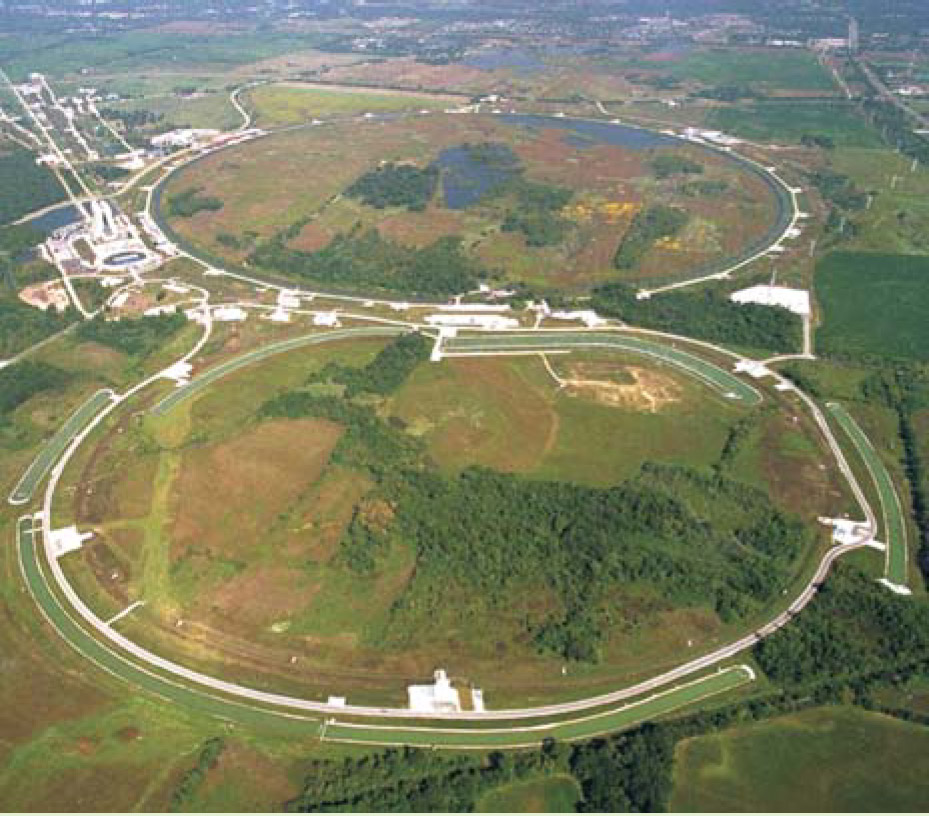Panel urges reprieve for the Tevatron
DOI: 10.1063/1.3529400
After much delay, CERN’s Large Hadron Collider (LHC) has been accumulating proton-proton data since April, albeit at only half the 14-TeV collision energy for which it was designed. Its predecessor, the 2-TeV Tevatron proton-antiproton collider at Fermilab, was scheduled to shut down for good at the end of 2011. But the Tevatron’s excellent performance over the past two years and the LHC’s delayed ramp-up to its design parameters prompted Fermilab’s program advisory committee in August to recommend that the Tevatron be kept running through 2014.
That extension would cost an estimated $130 million. So HEPAP, the high-energy-physics advisory panel to the funding agencies, asked its particle-physics project prioritization subpanel (P5) to assess the scientific merit of the proposed extension and weigh it against anticipated negative impacts on the rest of the US particle-physics program.
At a special HEPAP meeting on 26 October, P5 chairman Charles Baltay (Yale University) presented the sub-panel’s conclusions. The P5 report’s principal recommendation was that the funding agencies should proceed with the three-year extension if the required resources “become available in addition to the present funding” for US particle physics. That means that an extra $35 million per year would have to be found for the next three fiscal years and $25 million for the following year.
The science case for the extension centers on the search for the putative Higgs boson, “the most pressing problem in our field,” as Baltay put it. Null results of Higgs searches at the Tevatron and CERN’s Large Electron-Positron collider have already narrowed its mass to the range 115-158 GeV. (For comparison, the proton’s mass is 0.94 GeV.) By the end of 2014, concludes the P5 report, the accumulated Tevatron data will have reached “better than 3-standard-deviation sensitivity” to a Higgs anywhere in that mass range. “This is the main motivation for the three-year extension.”
“In the long run, the LHC is clearly the machine to do Higgs physics,” says the report. But it is scheduled to shut down at the end of 2011 for 15 months to prepare for operation at 14 TeV, and then it’s unlikely to start accumulating data at its design rate before 2013.
“We don’t see this as a horse race,” says Baltay. His presentation stressed the “complementarity” of the two colliders. Their searches contend with very different backgrounds and therefore rely on different Higgs decay modes. If both machines reveal something that might be the Higgs boson predicted by the standard model of particle physics, data for different decay modes from different beam particles colliding at different energies should make it easier to detect much-sought-after departures from the standard model.
Some particle physicists worry that the subpanel’s strong affirmation of the extension might result in an unfunded mandate. And concern was expressed at the meeting that even if the requisite $35 million is forthcoming for the first year of the extension, it might be withheld in subsequent years. Still, after Baltay’s presentation, the HEPAP members present voted, with just one dissenting voice, to accept the P5 report. “Now,” says HEPAP chairman Melvyn Shochet (University of Chicago), “it’s up to the funding agencies.”

The Tevatron at Fermilab was, until this year, the world’s premier particle collider. With the startup of the higher-energy Large Hadron Collider at CERN, the Tevatron was scheduled to be shut off at the end of 2011. But now an expert panel recommends that the Fermilab collider’s life be extended by three years.
FERMILAB





